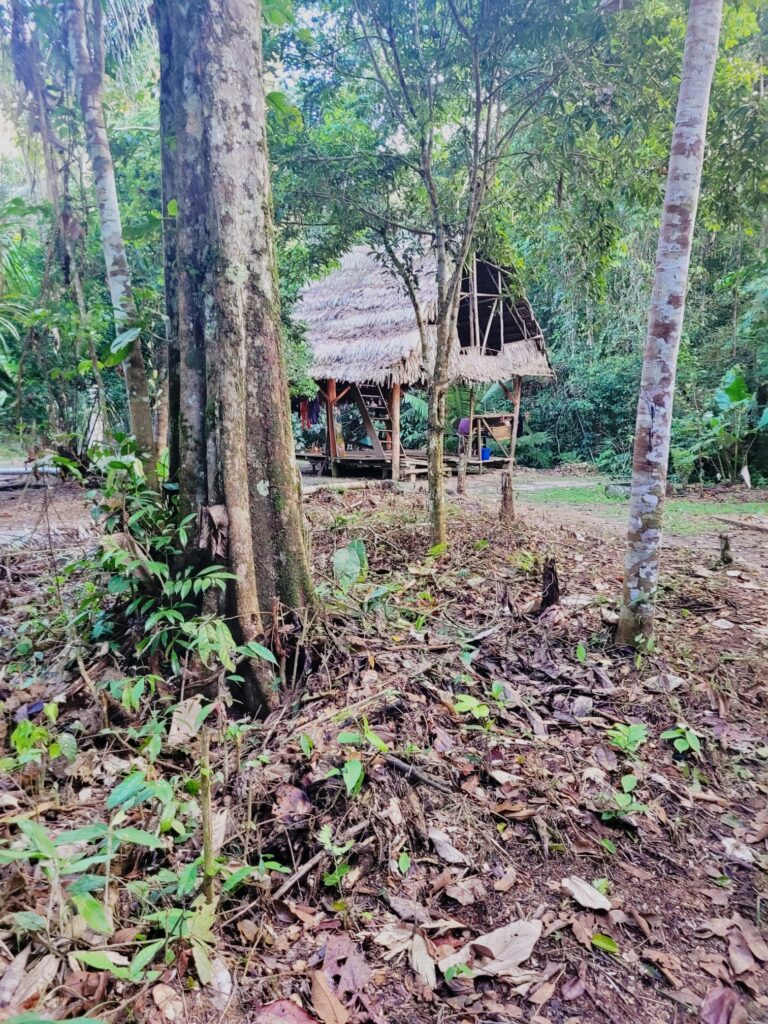We assembled for you a list of 5 free or very cheap offbeat destinations in the sacred valley that touched our hearts and made us feel closer to earth and the spirit of Peru. The places in the list below are obviously not packed with tourists. They can serve as an adventure during the low season and a relief from the crowds during the high season.
Countless words were written about the magical sacred valley in southern Peru. A rare combination of unique culture, fascinating history, and stunning views make the sacred valley one of the most popular areas in South America.
We stayed in the sacred valley for more than a month, visiting famous destinations as well as unique and distant ones. Even though we found popular places like Machu Picchu a must-visit destination, we felt that mass tourism made them loos their magic. For us, low-key villages like Lares and hidden valleys such as Pumahuanca were far more fascinating, with no effort or overpriced entry fees.
What to Pack for an Offbeat Trip in the Sacred Valley
Let’s start with the basics. Choose the best travel backpack for you. As there’s a lot to explore in the sacred valley, make sure it has proper back support. In addition, choose a high-quality daypack for your day trips.
- A rain poncho is useful if you plan to travel to the sacred valley during the low (rainy) season. It kept us dry during some rainy hikes.
- A good fleece jacket for Him & for Her can literally save your trip as the nights can be freezing, especially during the high season.
- Sunscreen.
- Your favorite hat.
- Proper hiking boots are a must, especially when hiking in the mountains. Make sure they are waterproof.
- We recommend traveling with a water bottle to avoid the unnecessary use of plastic. You can fill it with river water when climbing higher up to the mountains or tap water if you’re an adventurist.
- Parents! If you plan to travel with your kid, know that a baby carrier is the most essential gear we pack! We also use this fleece onesie to keep our toddler warm.
Now that we are ready let’s dive into some free or low price destinations in the sacred valley.
1. Chinchero Market
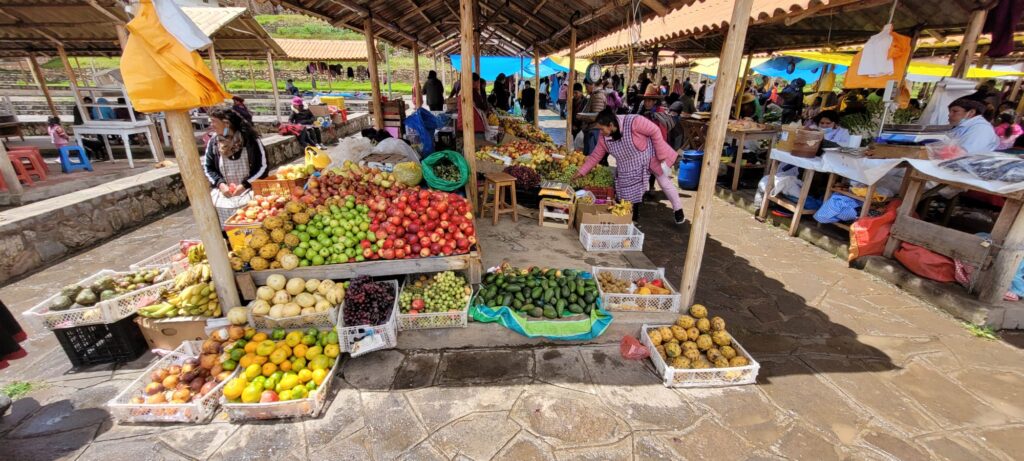
- Price: Free
- The market is open only on Sundays
Colors, massive plates of food (yes, massive) with various dishes, fruits, colorful artwork, vegetables, colorful fabrics, chicha, pastries, yogurt, and bread all are homemade. Oh, did we mention it’s a colorful market?
Obviously, the entrance fee to the market is free, but it’s up to you and your huggling skills if this experience in the sacred valley will cost more than you thought. If it makes you feel any better, we left a lot of Soles there, but it was totally worth it.
Markets, in general, are a positive experience, but we found the Chinchero market to be an adventure for all senses.
The small town of Chinchero lies on the main road between Cusco and Urubamba, nearly 3,800 m above sea level (yep, higher than Cusco).
In addition to being a home for the famous sacred valley weaving artwork, the dynamic market offers diverse, delicious dishes. Actually, so many of them that we found ourselves coming back one weekend after the other just to try them all.
After slow-soaking more than enough beans during our travels and cooking for ourselves we decided to let go and enjoy the local cuisine of Chinchero.


Even though Chinchero’s market is a lot smaller than the craft market in Pisac and Cusco, we found it to be better, way better. Every artwork is presented with space and respect and not hidden by the clutter of items. One would imagine that the prices will be higher, but they’re lower. Even though we still recommend huggling.
We usually don’t encourage shopping and accumulating during your travels (and ours). But Chinchero market is defiantly the place to let go. Even if you’re at the beginning of your journey, don’t miss an opportunity to get one outstanding weaving work. For us, it was close to the end of our trip, and let’s just say we went over our daily budget.
How to Get to Chinchero Market From Urubamba
From the central bus station of Urubamba, a bus leaves for Cusco every 20 min. The same bus stops 200 m from Chinchero Market in the town of Chinchero. The ride from Urubamba to Chinchero lasts around 45 min and costs s/6 (1.5$).
How to Get to Chinchero Market From Cusco
From Cusco take the bus to Urubamba from Puena Grau at the intersection of Av Miguel Grau and Av del Ejército. Ask the bus driver to drop you off at Chinchero. The ride from Cusco to Chinchero lasts 30 min and costs s/5 (1.5$).
2. Visit the Hot Springs of Lares
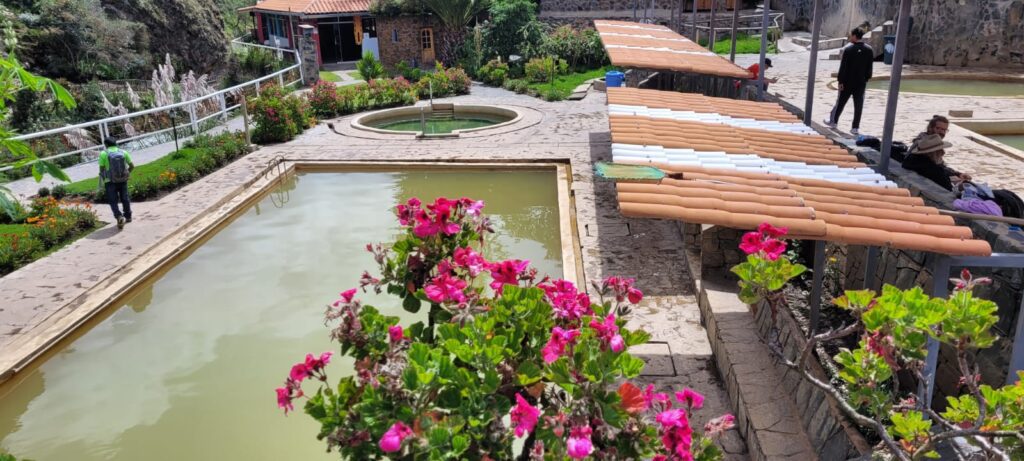
One of our favorite free offbeat destinations in the sacred valley is the charming town of Lares, there you can enjoy the Peruvian culture and soak in unique hot water springs for just a few Soles.
Lares is a small town located 2 hours from the city of Calca. Even though it has a population of only 900 people, it acts as the center for many mountain communities in its area. And that’s what makes it so special.
The term “authentic” is overused by many travel blogs, but sometimes there’s no other way to describe a place.
We saw the different communities gather in their traditional dressings. Each community with its unique style: hats, ponchos, classic baby carriers, skirts, and shoes. It felt like looking through a kaleidoscope
At Lares, we were finally able to distinguish between the various dressing colors of each village.
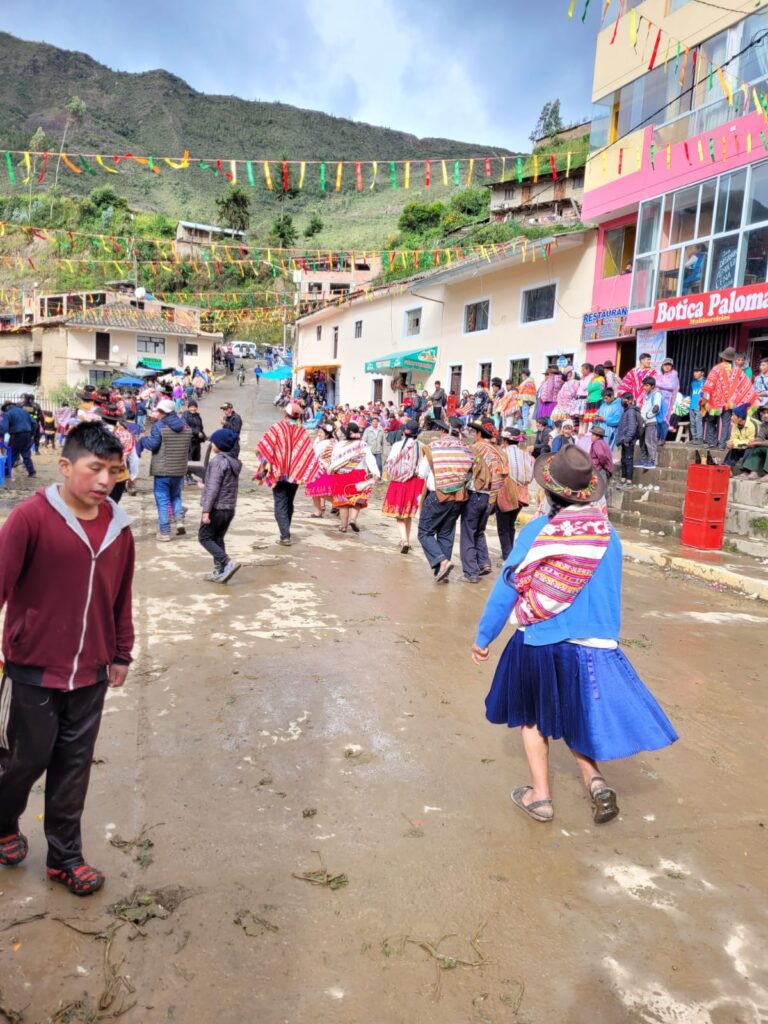
Luckily, we arrived in town on a random day in March when a huge festival took place. Hundreds of people gathered together, drinking, dancing, and chilling on the stairs around the town’s square. Our goal was to taste as many dishes as we could while at the same time trying to avoid getting hit by a water balloon from the village’s children (and adults).
The town has a central square with a few streets surrounding it. On those streets, you can find a variety of delicious food, freshly baked bread, local honey, and some fruits and vegetables.
The Hot Springs of Lares
A beautiful serine site located 2 km away from the town of Lares. You can take a taxi there, but we recommend hiking. Besides the stunning view on the way, it will give you a great opportunity to get a glimpse of day-to-day life in the sacred valley.
The entry fee to the springs is s/15 (4$) per person. The site has several pools in different temperatures, from warm to extremely hot.
We spent hours there moving from one pool to another, to the cold waterfalls, and back to the hot pools.
It was a day of fun! An absolute joy.
Traveling for a year with our two-year-old jumping between buses and hostels can sometimes feel like a grind. We realized we didn’t take a day off for a while. To read more about Backpacking with a Baby or a Toddler.
Chillin in the pools, talking to Peruvians, and purifying our bodies in the tranquil site made a positive impact on us and revived our energy.
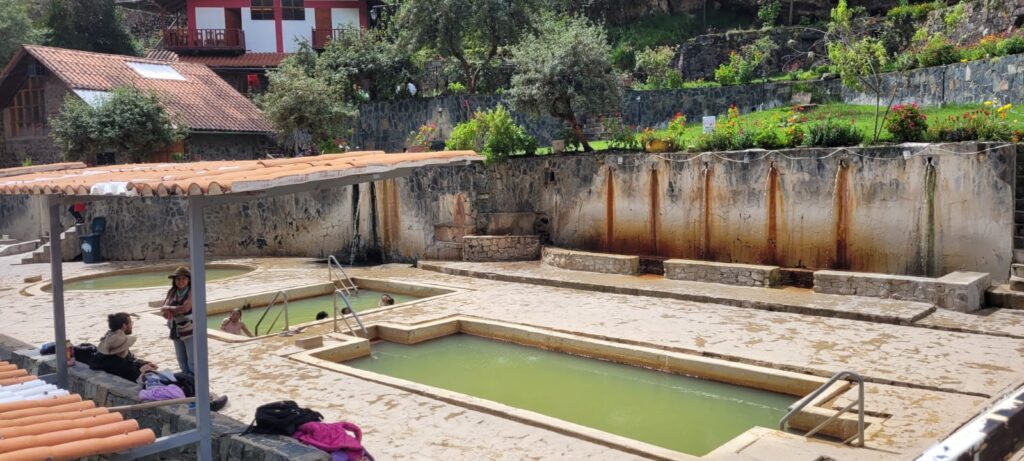
Where to Stay in Lares
As we said, Lares is not a touristy place. Therefore don’t expect to find one of its 3 hostels on any booking platform. We took our chances and arrived without booking in advance.
You better call a hostel directly and book yourself a room if you arrive during high season. We visited Lares during the low season, asked around, and chose Hostal Kely. We paid s\35 (10$) for a private room with a shared bathroom.
Hostal Kely
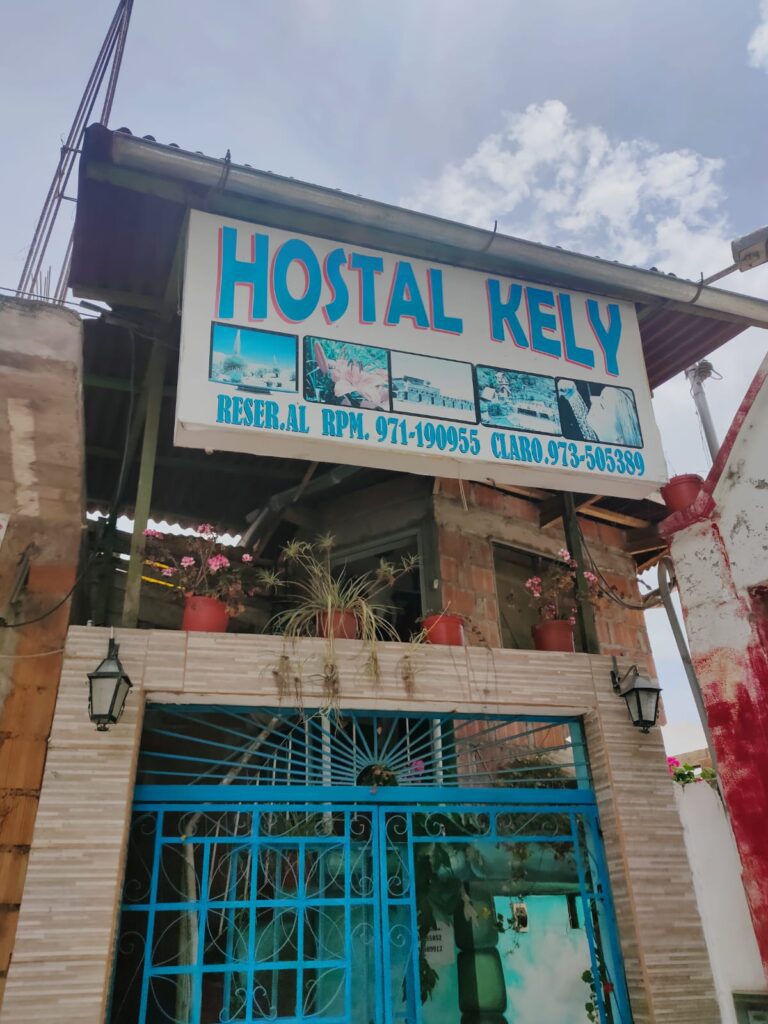
The hostel is run by a friendly family and sits only a few steps from the main square. The rooms are spacious, with comfortable beds and heavy blankets for the chilly nights (most of them are).
Hostal Kely doesn’t have a shared kitchen, but they did let us use their private kitchen when we needed to.
The family who lives there knows a lot about the area, and you can consult with them about your next steps – That’s how we ended up in the hot springs.
How to Get to Lares and the Hot Springs
First, take a combi to Calca, one of the main towns in the sacred valley. In Calca’s central bus station you’ll find colectivos leaving to Lares. The ride costs s/10 (2.5$) per person and lasts one hour and 45 min. If you can’t find a combi, you can take a shared car. You’ll have to wait for it to fill up with 6 people and pay s/13 (3$) per person.
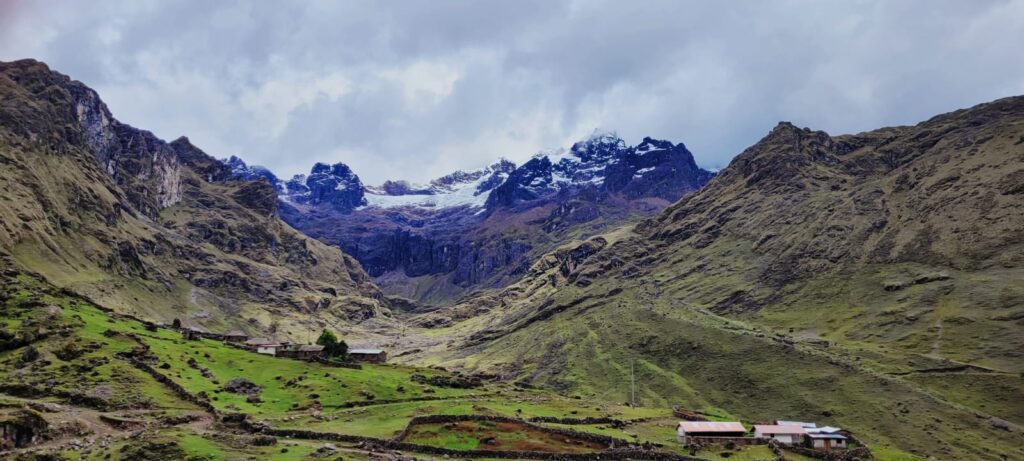
The winding road will lead you up the mountain and down again, where you’ll be able to spot herds of alpacas grazing along the way. With snow-capped mountains around and random waterfalls creating a river the combi must cross, it will surely be a memorable ride.
3. Hike in the Pumahuanca Valley
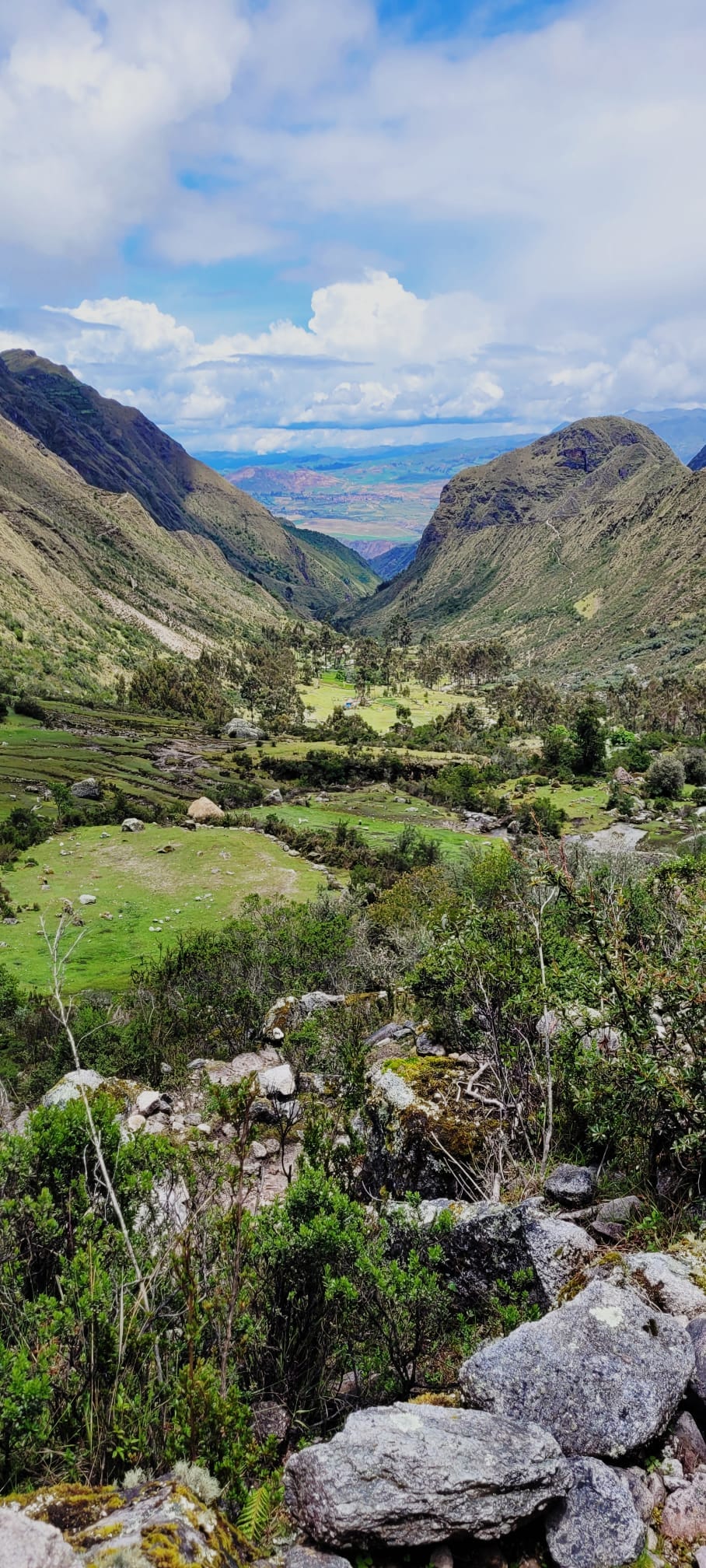
- Route Type: Out & Back
- Length: 10 Km
- Elevation Gain: 800 m
- Price: Free
After you chilled in the hot springs of Lares, stretch your legs with a free hike in the sacred valley. Incredible ancient ruins, and spectacular views, with only alpacas, shepherds, and locals along the way. And the best part: you don’t need to buy the Cusco tourist ticket (Boleto Turistico) to visit it.
The hike of Pumahuanca Valley was one of our favorite day hikes in Peru; after our adventurist journey to the Amazon rainforest, it was just what we needed.
The fresh dry air hilled our mosquito bites. And the marvelous sights of the mountains surrounding the lush green valleys made us appreciate mother nature. In addition, this route is the perfect acclimatization to Cusco’s treks as it reaches 3,900 m above sea level.
Where does the trail to Pumahuanca valley start, and how to get there from the sacred valley?
The hike starts from the highest point of Urubamba, the biggest city within the sacred valley.
From Urubamba, take a moto-taxi to the hamlet (a very small village) of Pumahuanca. If the driver doesn’t know where it is, tell him it’s close to Piscigranja Pumahuanca Arariwa, a famous trout farm, and restaurant.
Ask the driver to drop you off where the road ends and the hiking trail begins.
You can see it very clearly on maps.me App.
The ride should cost around s/15 (4$) and can reach s/20 (5$) as well. It’s a bit expensive, but the elevation gain is approximately 400 m, so it seemed reasonable.
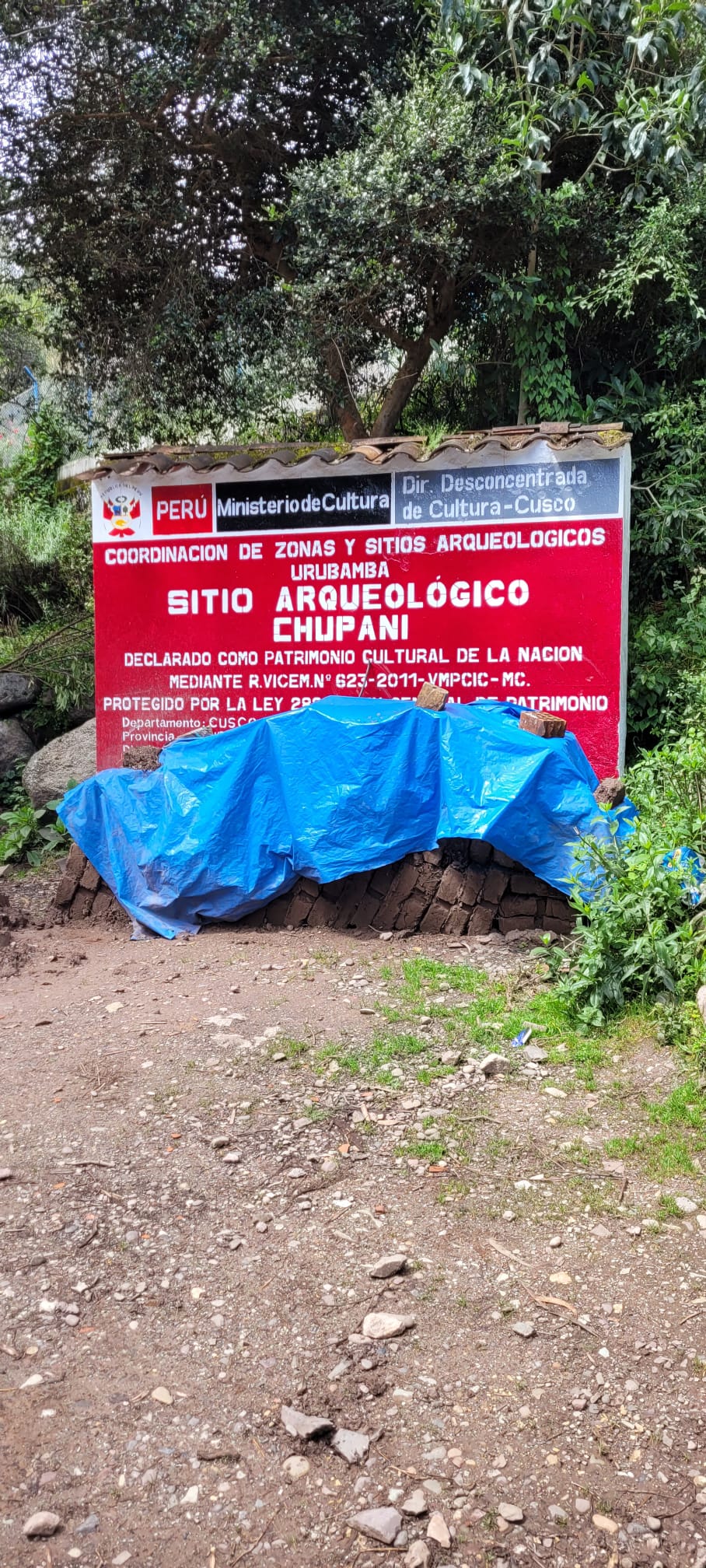
The beginning of the trail starts at 3,200 m above sea level. The course is not marked, but it goes alongside the river. And every time you see a fork, the two trails eventually connect (we tried all of them for you).
After visiting Urubamba, a pretty big town on the scale of the sacred valley, reaching the trail can open your senses. What do we mean? You can hear the sound of water flowing in the river together with the rustle of the leaves. It cleared our minds, and we found ourselves walking fast up the hill but not in a hurry.
Pure meditative state.
A father and son arrived from nowhere and crossed by us with no words…but a kind greeting nod.
The climb is constant, and after around one-third of the way, maps.me shows a lagoon, but it’s just a wider river area. Indeed, it’s a beautiful place, but don’t waste your time looking for a lagoon.
Not long after, you’ll reach the Inca site of Chupani.
The archeological site of Chupani in the sacred valley
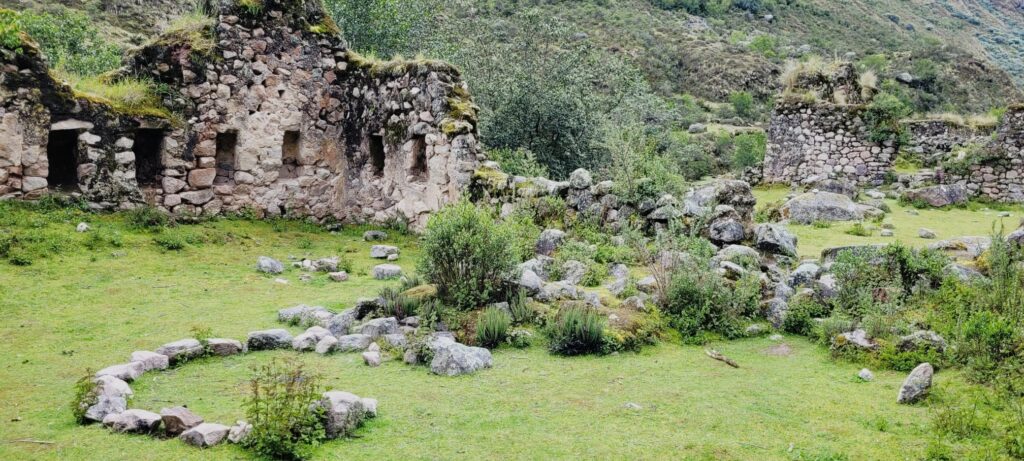
There is a sheer number of archaeological sites within the sacred valley unknown to most tourists, Chupani is one of them, but it’s not going to be hidden for long.
Lamas and Alpacas grazed around us while we spent some time among the ruins. The stonework is simple and blends with nature, like most Inca ruins. But you can still see the original plaster on some of the walls.
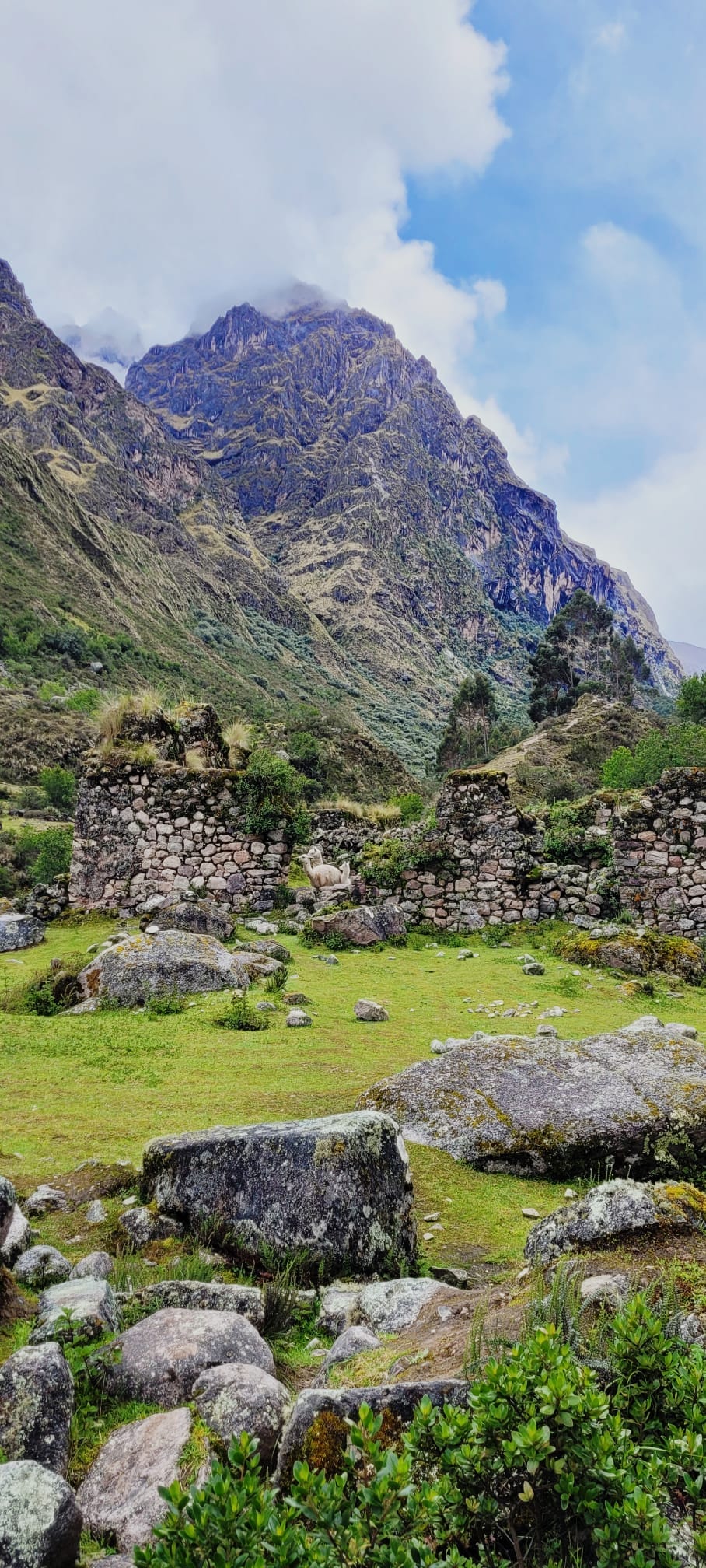
It was perfect. Strolling among the ruins was the pick of the hike!
Just before the top, you’ll pass by a tiny Peruvian village of 3 houses. From there, it’s a steeper climb up to the end of the trail. Notice, on your right-hand side, you’ll see an impressive waterfall. It’s not marked on maps.me, but we saw a path leading to its bottom. So, if you’re an adventurist or not carrying a baby, go explore and let us know how it went.
The trail ends at a beautiful lookout point with a waterfall of some sort. Let’s just say the waterfall is not the main attraction, but instead the marvelous view of Pumahuanca valley and Urubamba valley.


Use the same trail to head back home.
It should take you one hour less than it took you to climb up. And once you reach the hamlet of Pumahuanca again, start walking down the road until a moto-taxi will pass by.
We immediately found one and paid s/5 (1.5$) to reach Urubamba’s center.
Where to Stay in Urubamba
Even though Urubamba is not as charming as Pisac or Ollantaytambo, it is located ideally in the middle of the sacred valley. Which makes it the perfect town to stay in if you want to explore the sacred valley from one spot. In addition, it has a sizzling farmers’ market on Wednesdays, Fridays, and Sundays you shouldn’t miss.
Mystical Experiences Hostel
Mystical Experiences Hostel is a family-owned hostel located 3 km away from Urubamba center, perfect for nature lovers. Judith and Hugo used to run a hostel in Cusco, and they know a thing or two about hospitality. Therefore you shouldn’t miss an opportunity to use their knowledge about the area.
At Mystical Experiences Hostel, you’ll find a few wooden cabins scattered around a magnificent open green space with a shared kitchen and an outstanding view.
The cabins are clean and equipped with warm blankets for cold nights. Moreover, the shower of Mystical Experiences Hostel is probably the hottest and best shower we had in our travels to Peru. If you’re already in South America, you probably survived one or two cold showers (when it’s freezing outside) and know what we are talking about.
The hostel was our base for over a month during our stay in the sacred valley. We left most of our belongings there several times and came back exhausted to a place that answered all of our needs; it became HOME.
4. Visit the last standing Inca fortress, Vitcos, Called Rosapata in Quechua – Huancacalle
It was when we found ourselves stuck in Quillabamba that we first heard about the mountainous village of Huancacalle and the Inca fortress of Vitcos.
*** Huancacalle and the archeological site of Vitcos are not officially in the sacred valley but they’re close enough and amazing enough so we felt comfortable listing them as one of our free and offbeat destinations in the sacred valley. ***
The visit to Machu Picchu left us hungry to explore more of the ancient Inca culture. Yet, we wanted to keep away from the masses. The village of Huancacalle and Vitcos fortress answered both of those needs.
Huancacalle is a charming small mountain village in the rugged region of Vilcabamba with hard-working residents who are not used to foreigners. Even though people are pleasant, don’t expect an enthusiastic welcome, as they are not involved in the tourist industry. And that’s one of the reasons we loved the place.
There are only two small tiendas located along the main street of Huancacalle, one hostel, and no restaurants. But if you’re looking for more of a buzz, you can stay in the town of Pucyura. Just 2 km before Huancacalle.
We found Pucyura a bit more equipped though far less charming: it has a central square which is a good spot to meet people, more tiendas, guesthouses, and simple restaurants serving delicious trout fish. Moreover, farmers occasionally arrive to sell their goods.
In retrospect, we chose to stay in Huancacalle for three reasons. First, because of the warm hospitality of Sixpack Hostal. Second, its proximity to the trail’s starting point leading to Vitcos. And third, For some reason, we disliked the energy in Pucyura, so we just ate there and walked to Huancacalle, hoping for a better vibe.
VITCOS
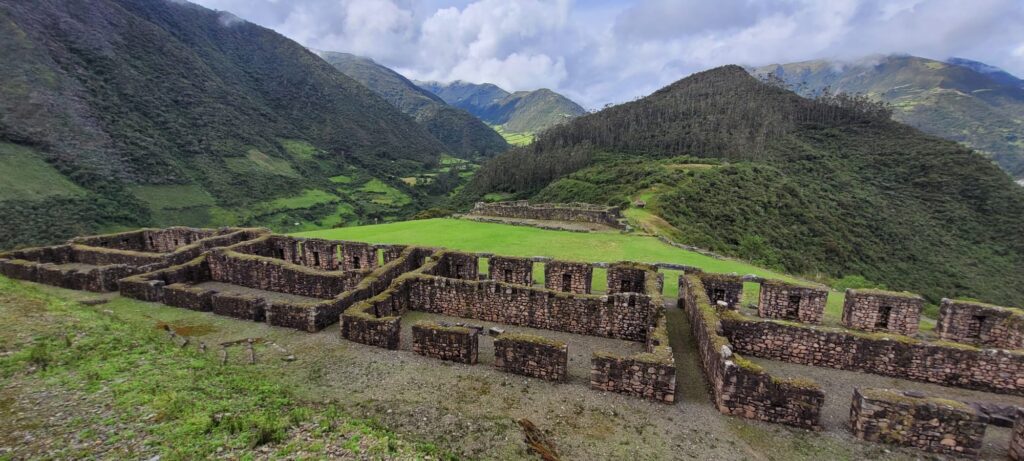
The fortress of Vitcos, also called Rosapata in Quechua, had enormous historical importance for the Incas. During the Spanish conquest, it acted as a hideout and an important city for the Inca ruler Manco and the Inca royalty.
Vitcos’ fortress is one of the only symbols of resistance of the indigenous culture against the Spaniards. And actually, it was in the central square of Pucyura, that we saw for the first time a statue of an indigenous king (Manco) overcoming a Spanish conquerer.
Even though it is an important and impressive site, it manages to stay under the radar, so you’ll have the route all for yourselves.
Hiking to the Archeological Site of Ancient Vitcos and the White Rock
- Route type: Loop
- Distance: 5 km
- Time: 2.5 hours
The trail is easy to walk and well marked with signs. Along the hike, you’ll have the chance to explore the fortress of Vitcos and the holly site of the white rock.
From Hospedaje Sixpak Manco, cross the bridge over the river, pass by the cemetery to your right and keep walking on the trail. After 200 m, cross the second bridge. On the other side, you’ll see many signs. To reach Vitcos, you have a 2.5 km walk with a moderate ascent.
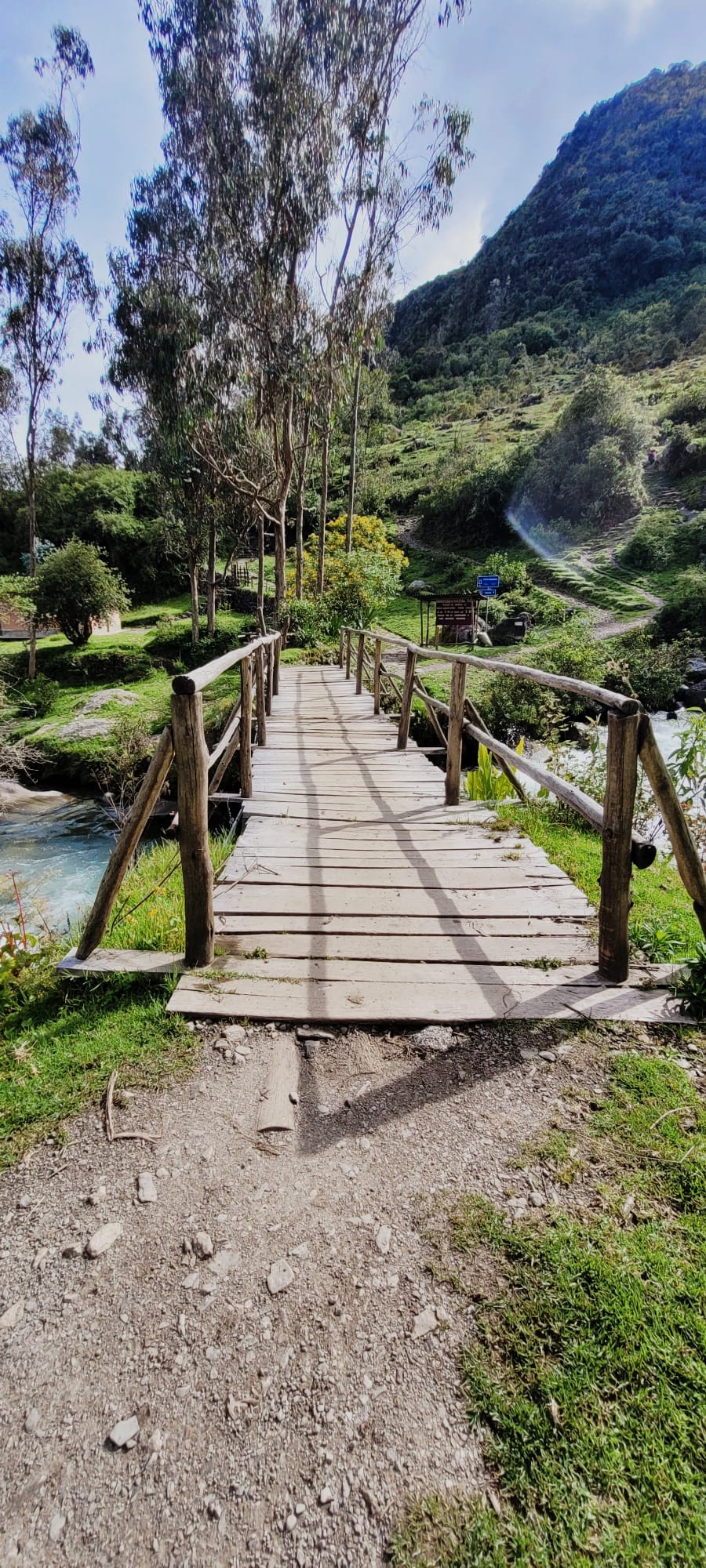
Vitcos is a marvel!
First, because you’ll probably be the only people there. And second, it’s untouched.
We could see it wasn’t fully excavated yet, but the complex of reviled structures is fascinating and mysterious. We felt like kids in our own private Inca maze.
On the archeological site, 15 gates are divided into 4 chambers. Each chamber has 3 gates leading to it, and the sections are separated by 3 gates leading inside the city\town\fortress?
The difference between the gates is clear.


We are not big fans of archaeology, but something about the Inca culture kept us fascinated.
So many unanswered questions in a world where nearly everything is known.
Moreover, the structure or formation of the buildings makes you adore the way the Inca cooperated with nature. While so many cultures far more ancient than the Inca were trying to overcome the greatness of nature with various structures, the Inca worked hand in hand with nature.
From Vitcos to the white rock, you have 1.7 km of a leisurely walk on a beautiful trail with a soothing view.
THE WHITE ROCK (Yurac Rumi)
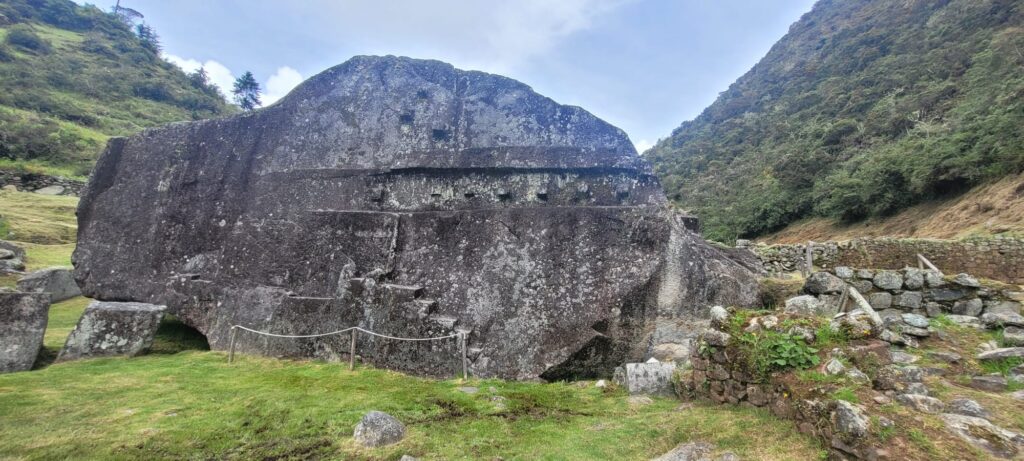
The white rock is a beautiful representation of the Incas skill as stonemasons due to its carvings and engravings on this 8m high and 20m long monolith. The site was a religious center where the Incas performed sacrificial rituals and was burned down by the Spaniards.
We knew nothing about the site when visiting it. Still, it was hard to ignore the ceremonial atmosphere of Yurac Rumi.
From the white rock, continue walking along the trail and stone stairs all the way down, back to the village of Huancacalle. Around 20 min walk.
Where to Stay in Huancacalle
Hospedaje Sixpak Manco
A lovely hostel run by the Cobos family with cozy yet simple rooms, a nice garden, and a superb ambient.
The hosting family welcomed us with complimentary coffee (a really good one) and a big smile. They are well-known and reliable guides and are very knowledgeable about hikes in the area.
The Cobos family can make you anything you wish for breakfast, lunch, and dinner at fair prices. As we usually cook for ourselves, they agreed we would use their kitchen. Still, we are grateful for trying their homemade pizza.
The hostel sits on the edge of town, next to the trail leading to the ruins.
For now, Hospedaje Sixpak Manco is not listed on any booking platforms. We recommend arriving there, as we did. We paid s\30 (8$) for a private room with a shared bathroom.
How to Get to Huancacalle From Quillabamaba
In Quillabamba, go to the main bus station and ask for the combi to Vilcabamba. Vilcabamba is the region where the town of Huancacalle sits.
As not many people live in the region and visit it, you may have to wait for a while for the combi to fill up. It’s best to arrive in the morning when most Peruvians take their trips.
The ride takes 2 and a half hours of mostly unpaved road and costs s/20 (6$) per person.
How to Get to Huancacalle From Cusco
First, you must arrive in Santa Maria. The ride takes 7-8 hours. Daily buses run from the Santiago terminal in Cusco.
From Santa Maria, take the combi to Huancacalle. It’s the same combi that leaves from Quillabamba. Unfortunately, not many combis run this route. So if you find yourself arriving at Santa Maria after 3 pm, you’re better off taking the same bus to Quillabamba and leaving the following day to Huancacalle.
The ride from Santa Maria to Quillabamaba lasts 30 min.
5. Visit the Cocalmayo Hot Springs in Santa Teresa
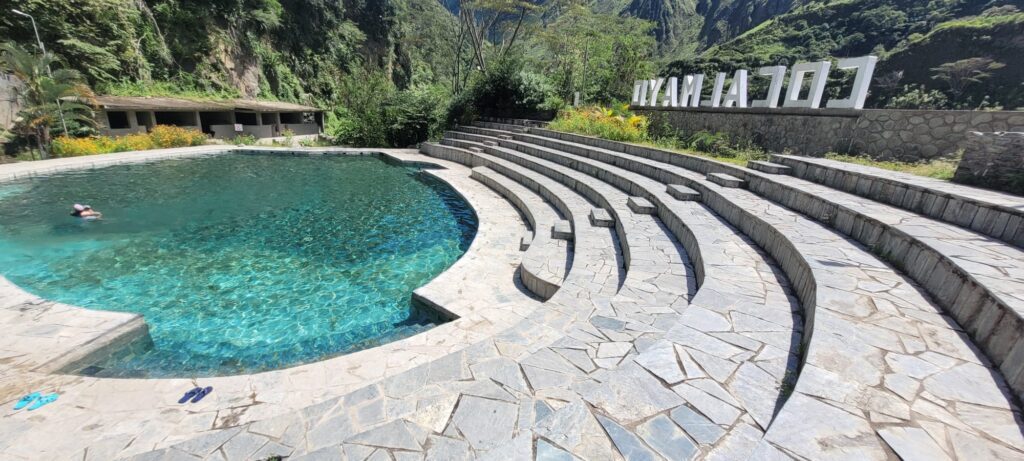
On the Andes and the Amazon rainforest’s border sits a small town with excellent coffee and divine hot springs. It will be hard to believe the pictures, but they are real.
Santa Teresa actually exists.
We first heard about Santa Teresa searching for a cheaper way to reach Machu Picchu instead of the high-priced train ride. After a quick research, we decided to take an alternative route that includes a bus ride of approximately 200 km from Cusco to Santa Teresa and a hike of 11 km to Machu Picchu.
We promise to tell you more about it in the ‘How to Get There’ section.
Cocalmayo Hot Springs
The springs are located 3 km away from the town of Santa Teresa. Expect a bumpy ride, but it’s nothing compared to the never-ending winding road from Cusco to Santa Teresa.
A Tuktuk will charge you s/4 (1$) per person to get to Cocalmayo hot springs, and the entrance fee is s/10 (2.5$) per person.
The site sits on the bank of the Urubamba river and gets its hot water from a natural underground source. Cocalmayo is organized and clean but maintains a natural atmosphere. The scenery of high mountains and 4 pools in different shapes is breathtaking.
3 pools are circular in shape, and one is squared in shape with a mountain cliff that acts as one of its edges. The water is transparent and clean. And unlike many other hot springs, they don’t have that boiled egg sulfur smell.
The pools at different temperatures are excellent for joint problems or bruises. Yes, it can even help soothe the flea bites from Machu Picchu.
The thermo-medicinal baths of Cocalmayo are perfect for relaxing after long walks or tedious bus rides. We visited the site on our way back from Machu Picchu, right after the 11 km hike along the railway tracks from Aguas Calientes to Santa Teresa.


In our opinion stopping in the small, quiet town of Santa Teresa is a must after your stunning yet touristy visit to Machu Picchu. In addition, it will be the ultimate (not free but totally cheap) off-the-beaten-track activity to do before or after your visit to the sacred valley.
Where to Stay in Santa Teresa
There’s one place where most travelers go, called Eco Quechua Lodge. It is famous for its zip line above the valley, and it’s near Cocalmayo hot springs. It was over our budget, so we decided to go to Miel Hostel, which was clean and a good value for money. Obviously, it’s not on any booking platform so ask around when you reach Santa Teresa.
How to Get to Santa Teresa
From Cusco
Take a bus from Cusco or the different towns along the sacred valley to Santa Maria. The ride costs around s/25 (6$) from the sacred valley and s/35 (9$) from Cusco.
From Santa Maria, take a colectivo to Santa Teresa for s/8 (2$).
From Machu Picchu (Aguas Calientes)
Walk for 11 km from Aguas Calientes to Hidroalectrica.
The hike is flat, easy, and stunningly beautiful by the rail track; we did it with our two-year-old boy, so it’s definitely doable.
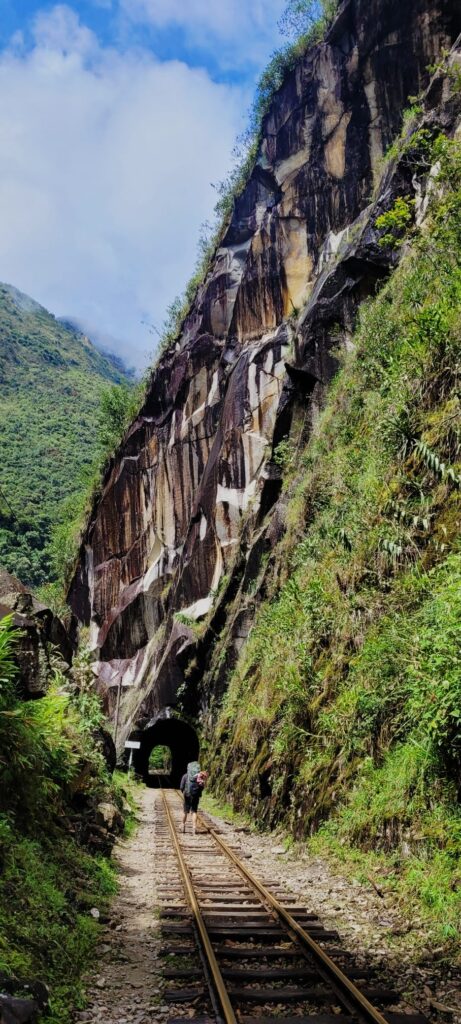
Hidroalectrica is basically an old hydroelectric power plant. From there, taxis will be waiting to take you to Santa Teresa. Even though it’s a very short ride of around 15 min, you’ll have to wait for other travelers to arrive before leaving. During the high season, it’s not a problem, but you’ll have to be more patient in the low season.
The ride from Hidrialectrica to Santa Teresa costs s/5 (1.5$) per person.
Final Thoughts
Well, what can we say? This post was quite straightforward about traveling to offbeat destinations for free or cheap in the sacred valley. But the final thoughts section will be a bit more personal.
The sacred valley opened a little door in our hearts and minds.
It is the first place in our year-long journey that we felt at home. Not as a metaphor; we literally saw ourselves living there.
The depth of the sacred valley in Peru can not be ignored. So much spirit, a wide variety of unique individuals, and the best fruits and vegetables we have ever tasted. All that makes the sacred valley a place where dreams can be fulfilled.
It always seemed silly to visit the same place twice because there are too many places to explore in our world. But the sacred valley made us change our minds.
One last thing
As much as we loved the sacred valley, we wouldn’t recommend participating in an Ayahuasca ceremony there. It just felt a bit forced, unnatural, and super expensive.
Don’t worry; we have a solution for you. Join us on our Amazon journey to find an affordable, authentic ayahuasca ceremony.



